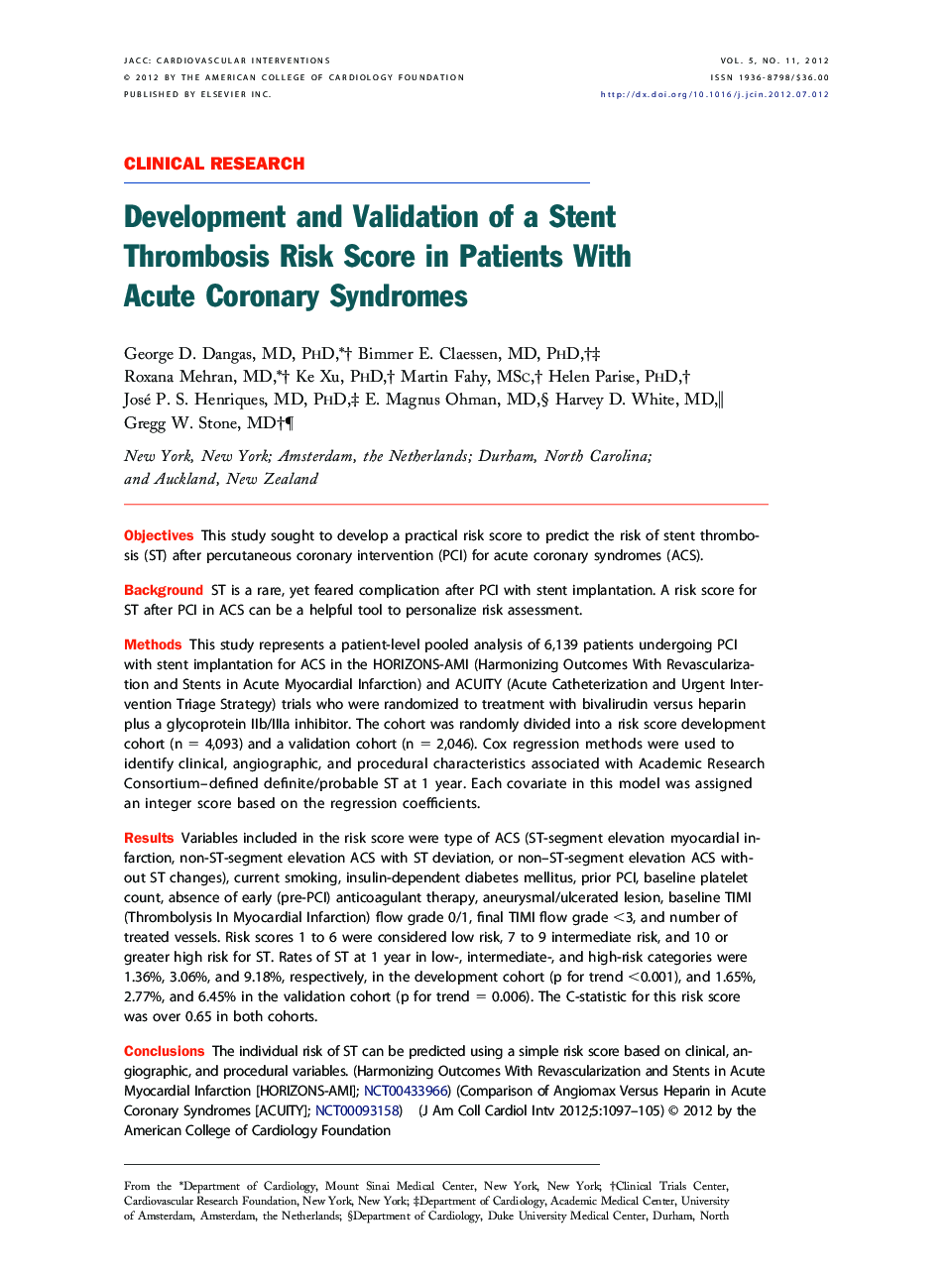| کد مقاله | کد نشریه | سال انتشار | مقاله انگلیسی | نسخه تمام متن |
|---|---|---|---|---|
| 2940825 | 1177046 | 2012 | 9 صفحه PDF | دانلود رایگان |

ObjectivesThis study sought to develop a practical risk score to predict the risk of stent thrombosis (ST) after percutaneous coronary intervention (PCI) for acute coronary syndromes (ACS).BackgroundST is a rare, yet feared complication after PCI with stent implantation. A risk score for ST after PCI in ACS can be a helpful tool to personalize risk assessment.MethodsThis study represents a patient-level pooled analysis of 6,139 patients undergoing PCI with stent implantation for ACS in the HORIZONS-AMI (Harmonizing Outcomes With Revascularization and Stents in Acute Myocardial Infarction) and ACUITY (Acute Catheterization and Urgent Intervention Triage Strategy) trials who were randomized to treatment with bivalirudin versus heparin plus a glycoprotein IIb/IIIa inhibitor. The cohort was randomly divided into a risk score development cohort (n = 4,093) and a validation cohort (n = 2,046). Cox regression methods were used to identify clinical, angiographic, and procedural characteristics associated with Academic Research Consortium–defined definite/probable ST at 1 year. Each covariate in this model was assigned an integer score based on the regression coefficients.ResultsVariables included in the risk score were type of ACS (ST-segment elevation myocardial infarction, non-ST-segment elevation ACS with ST deviation, or non–ST-segment elevation ACS without ST changes), current smoking, insulin-dependent diabetes mellitus, prior PCI, baseline platelet count, absence of early (pre-PCI) anticoagulant therapy, aneurysmal/ulcerated lesion, baseline TIMI (Thrombolysis In Myocardial Infarction) flow grade 0/1, final TIMI flow grade <3, and number of treated vessels. Risk scores 1 to 6 were considered low risk, 7 to 9 intermediate risk, and 10 or greater high risk for ST. Rates of ST at 1 year in low-, intermediate-, and high-risk categories were 1.36%, 3.06%, and 9.18%, respectively, in the development cohort (p for trend <0.001), and 1.65%, 2.77%, and 6.45% in the validation cohort (p for trend = 0.006). The C-statistic for this risk score was over 0.65 in both cohorts.ConclusionsThe individual risk of ST can be predicted using a simple risk score based on clinical, angiographic, and procedural variables. (Harmonizing Outcomes With Revascularization and Stents in Acute Myocardial Infarction [HORIZONS-AMI]; NCT00433966) (Comparison of Angiomax Versus Heparin in Acute Coronary Syndromes [ACUITY]; NCT00093158)
Journal: JACC: Cardiovascular Interventions - Volume 5, Issue 11, November 2012, Pages 1097–1105